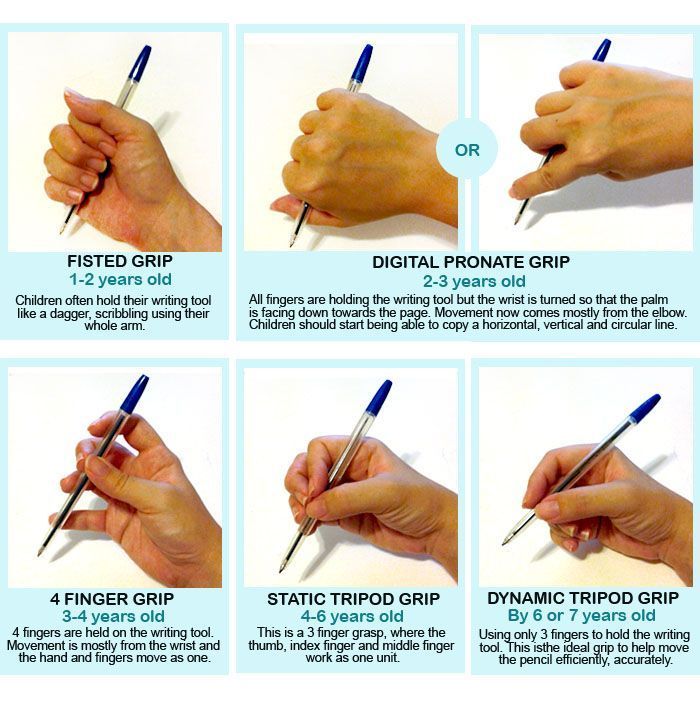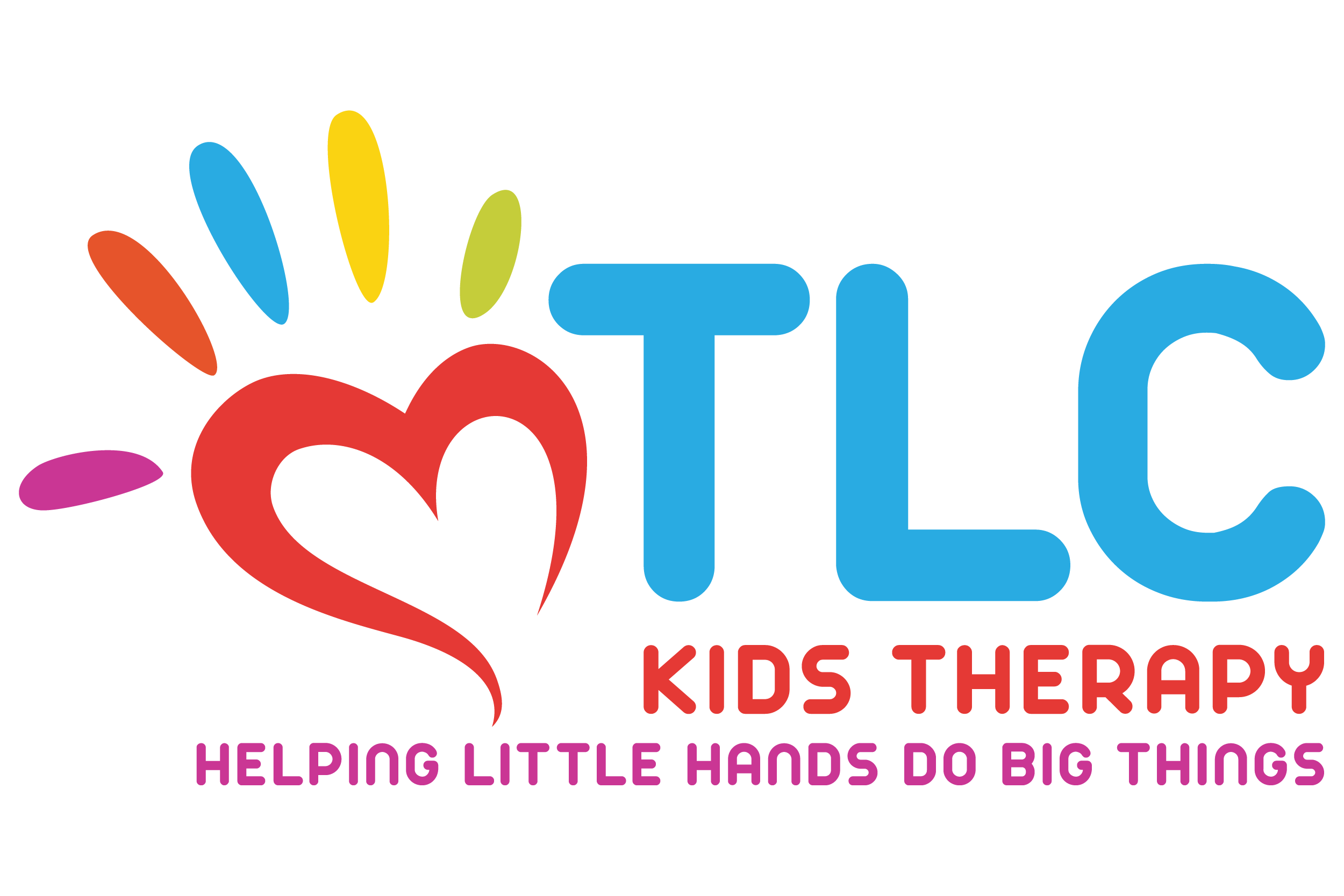So your child is having trouble holding and writing with a pencil…is it time to use a pencil grip?
I often get this question from both teachers and parents. Should my child or student use a pencil grip to help with handwriting. The short answer is maybe! Depending on your child’s age, pencil grips can be a simple and useful strategy to help correct a poor grasp and aid in better dexterity and control to write letters, numbers and shapes. But when is the appropriate time to start and what are some other strategies to try instead of immediately reaching for the pencil grips.
Well, let’s start with the approximate age to use pencil grips and when to avoid them. As a child ages, they begin with prewriting and use of classroom tools. The small, intrinsic muscles of the hand develop slower the larger muscle groups, such as in the arm and shoulder. It’s ideal to focus on strengthening those small intrinsic muscles and using a pencil grip is not the best way to accomplish this. Instead, try using small, broken crayons or small golf pencils. This will accomplish two key things…
- those small muscles will get some much-needed exercise
- by using small writing utensils, a pincer grasp is being promoted. This helps to develop a tripod grasp, which is a mature grasp that will be used as they refine their movements.
Besides broken crayons, large, fat crayons and markers can also be utilized. These will be easier for small hands to manipulate and write with. I always suggest small broken crayons or pencils first as this once again improves hand strength and dexterity. But large, fat utensils work as well.
What age is the most appropriate to start using them? There is no hard and steadfast rule here, but I generally recommend no earlier than 5 years old. They should also only be used with children who have already received some support to develop their pencil grasp already. They should not be the first strategy that is tried for a child who is having difficulty holding onto their pencil.
For children younger than five, it is important to look at writing utensils that will help to support their finger and hand development first, before giving them a pencil grip. This is also true for children under six who may have developmental delays. Children initially hold onto their pencil with their whole hand, this is called a gross or palmer pencil grasp. Older children using this grasp have not developed the fine motor skills needed to hold onto their pencil with their fingers. These children need more support to develop their hand and finger control. This can be done by working on their fine motor skills.
Below is a list of appropriate pencil grips at different ages.

If the child is holding the pencil with their fingers but their grasp is not mature, you can also try the quadruped and alternate tripod grasp. Lastly, for children who have started to hold the pencil with their fingers rather than their whole hand, but who are still struggling to get the correct fingers onto their pencil, a pencil grip can be tried.
You’ve chosen to use the pencil grip, now what?
It is extremely important to monitor your child’s use of the pencil grip. DO NOT just give them a grip or variety of grips and expect their grasp and writing difficulties to be solved. You must regularly check whether the grip is being used correctly and actually helping! You need to ask if the grip has improved your child’s grasp on the pencil. Note the pictures above and your child’s age. It’s ok to try a grasp that’s slightly ahead of their age range but don’t push them if it’s too soon. Check to see that your child is actually holding the pencil grip correctly with their fingers in the correct position. Also, kids will sometimes move the grip up and completely out of the way as they aren’t used to the grip and/or don’t like using it. If this is the case, you will need to correct them and possibly try a different grip if they complain of pain or discomfort. Some children will resist any pencil grasp as they are not accustomed to using it. You will need to persuade them to use the grip as often as possible and explain that the grip will help.
You will also need to Consider your child’s handwriting
- Has the child’s handwriting improved or is it worse? Does it deteriorate when they use the grip? Initially there might be a slight deterioration as the child gets used to using the grip. However, the quality of their writing should improve over time.
- Has the child’s writing speed increased or decreased? Again, it is expected the child may write more slowly to start with. However, with time and practice, the grip should improve their grasp and eventually, their speed.
Which is the best grip for your child. There is a plethora of different types of grips and they’re never one size fits all. Depending on your child’s grasp issues, certain grips may help better than others. Consulting an OT at this point would be helpful as they can identify exactly what issues your child is having, and which grip or course of action should be taken to best correct their grasp and improve their writing. Below are just a few examples of grips commercially available that I often use. It’s not necessary to get one of these specific grips, I’m just listing some that I’ve personally used and have had success with!
Grotto Grip and Elephant Grip
The Grotto Grip is one that I find helpful in most cases. Just as a note, it looks very similar to the ‘Cross-Ultra’ grip but the shape is slightly different. The grip has large enough spaces to give the children some flexibility of where they put their fingers. However, it is molded enough to ensure that they do have their fingers in the correct position. The Elephant Grip allows the same flexibility. It is sometimes not the best grip for children with small fingers or for those that push very hard with their fingers. This is because their fingers slide through the holes at the front.
Triangle and Start Right
Triangular grips are one of the grips I see most commonly in schools. There are also triangular shaped pencils. These can be helpful for younger children to give them an idea of where to put their fingers. However, I don’t find that they are sufficient to help improve a poorly developed grasp. The Start Right serves as a reminder to children to pinch their pencil with the correct fingers. There is however, limited molding underneath, so children don’t always get their fingers into the correct position.
HandiWriter and Twist n Write
Both of these grips can be helpful for children who have a thumb wrap grasp as they help to open up the space between the thumb and the fingers. A benefit of the HandiWriter is that it can be used with any pencil or pen. A cheap alternative to the HandiWriter…tie two rubber bands together! Wrap one around the wrist/forearm and the other to the top of the pencil. The Twist n Write can be refilled and there is a pen version. This can be a good option for older children as it forces them to adopt a different finger position. Its shape also makes it difficult for them to slip back into their old grasp.
‘The’ Pencil Grip and Round Pencil Grips
Both of these grips can be helpful for children that use too much pressure when writing. They also have a different texture so can be helpful for children who have some touch sensitivity and don’t like the feel of a wooden pencil. As ‘The’ Pencil Grip is only slightly molded I find that children slip back into their preferred pencil grasp quite easily. Therefore, it isn’t great for correcting an immature pencil grasp. Round grips provide no molding so won’t correct an immature pencil grasp in any way. When your child is struggling with writing and drawing and having a difficult time holding an age-appropriate grasp, there are various pencil grips out there that may provide the help your child needs! I find it’s always best to improve their fine motor skills first before resorting to the use of a pencil grip, however they can be a useful tool! Just remember to closely monitor their use of the pencil grip. Be sure they are using it correctly and most importantly, that their writing is improving. Before you know it, your little one will hopefully be using a much more functional grasp and writing more neatly, efficiently and with greater speed .
